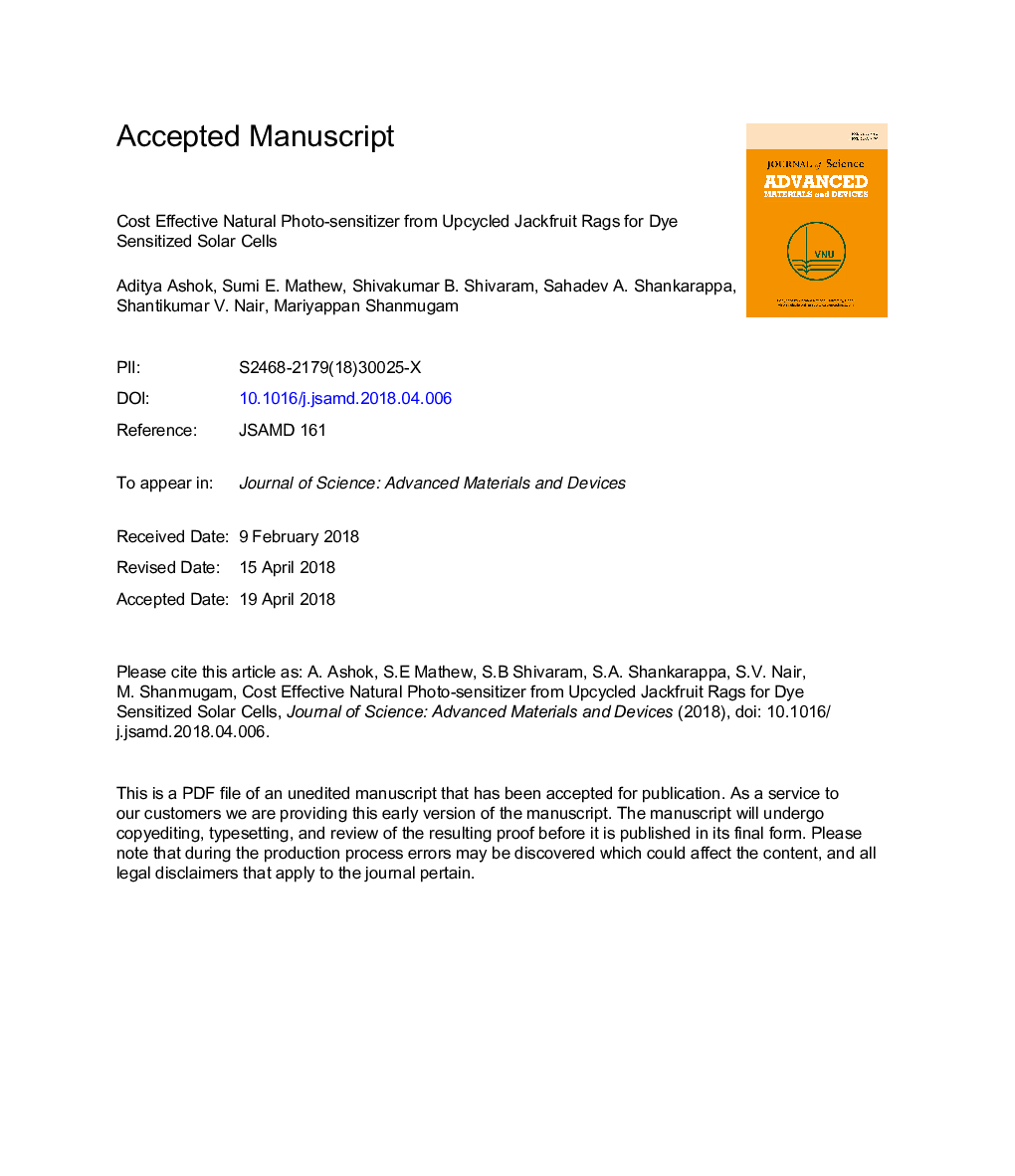| Article ID | Journal | Published Year | Pages | File Type |
|---|---|---|---|---|
| 7904252 | Journal of Science: Advanced Materials and Devices | 2018 | 25 Pages |
Abstract
Photo-sensitizers, usually organic dye molecules, are considered to be one of the most expensive components in dye sensitized solar cells (DSSCs). The present work demonstrates a cost effective and high throughput upcycling process on jackfruit rags to extract a natural photo-active dye and its application as a photo-sensitizing candidate on titanium dioxide (TiO2) in DSSCs. The jackfruit derived natural dye (JDND) exhibits a dominant photo-absorption in a spectral range of 350Â nm-800Â nm with an optical bandgap of â¼1.1Â eV estimated from UV-visible absorption spectroscopic studies. The JDND in DSSCs as a major photo-absorbing candidate exhibits a photo-conversion efficiency of â¼1.1% with short circuit current density and open circuit voltage of 2.2Â mAâ
cmâ2 and 805Â mV, respectively. Further, the results show that the concentration of JDND plays an influential role on the photovoltaic performance of the DSSCs due to the significant change in photo-absorption, exciton generation and electron injection into TiO2. The simple, high throughput method used to obtain JDND and the resulting DSSC performance can be considered as potential merits establishing a cost effective excitonic photovoltaic technology.
Related Topics
Physical Sciences and Engineering
Materials Science
Ceramics and Composites
Authors
Aditya Ashok, Sumi E. Mathew, Shivakumar B. Shivaram, Sahadev A. Shankarappa, Shantikumar V. Nair, Mariyappan Shanmugam,
